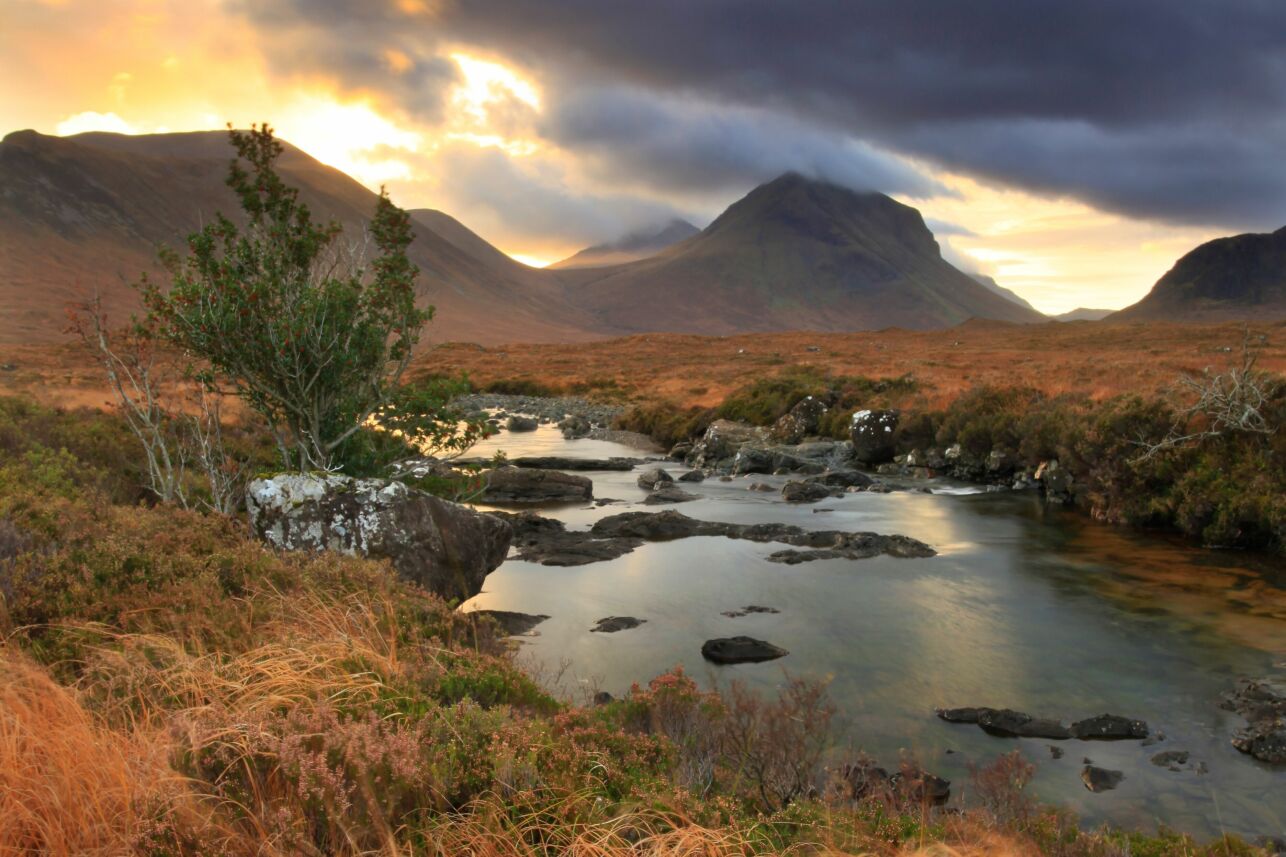Interview: Thomas Widrow
Thomas Widrow, the Trust’s Campaigns Manager, chats with our Development and Communications Intern, Heather Graham, about the Carbon Emissions Land Tax (CELT) and discusses the issues Scotland is currently facing in terms of carbon emissions – and why we need to act now.

Tell us a bit about your role at the Trust and how you became involved in environmental policy?
I first became aware of the climate and environmental crises in high school, and that translated into a first job in the environmental sector while still at university where I also became involved in several activist groups. After a couple of years working in market gardens, I joined the Trust's policy team.
As Campaigns Manager, I coordinate the Trust's policy campaigns and ensure our relationships with the wider environmental movement are strong so we can deliver for wild place where nature, people and communities have the freedom to thrive.
What is the current situation with carbon emissions in Scotland?
According to the BBC, in 2021 Scotland missed its legally binding greenhouse gas reduction targets for the 8th time over the last 12 years. But there is a solution to this problem.
Scotland's land has the potential to soak up enormous amounts of greenhouse gases. Currently, Scotland is a net emitter, despite the forestry sector's plantations. This is due to the emphasis on monoculture of tree crops over native woodlands, and because our peatlands are in very bad shape, releasing greenhouse gases into the atmosphere 24 hours a day, every day of the year. That needs to change.
Why is reducing carbon emissions important?
Carbon emissions must be brought down to zero in order to limit global warming and its devastating consequences for all life on Earth. Even an increase in global temperatures of +1.5 °C would translate into increases in extreme weather events and rising oceans.
To limit global warming to +1.5 °C, the top scientists of the International Panel on Climate Change (IPCC) tell us we need to reduce our emissions by 45% by 2030 and reach net zero by 2050, using 2010 as the baseline for reductions. It is important to reach both the 2030 and 2050 targets. If we miss the 2030 target, our pathway to net zero will be a lot steeper. We also risk creating global negative feedback loops that will result in uncontrollable, runaway greenhouse gas emissions.
What is the Trust currently campaigning for in relation to carbon emissions?
As the leading voice for wild places, the Trust has a responsibility to do its part in the fight against the climate crisis. If we don't manage to hit the IPCC targets, wild places, and the biodiversity they support, will be incredibly vulnerable to the deregulation of the climate.
That is why we have worked on our own innovative solution: a Carbon Emissions Land Tax (CELT).
How would CELT work?
CELT would be operated by rural councils, and is based on two powerful principles: First, that large estates have a responsibility to manage their land in the public interest; for nature, climate and communities. And second, that polluters should pay.
In a nutshell, it would work a bit like the energy performance certificates for our homes. A carbon emissions land tax would band landholdings over 1,000 hectares according to their land uses and estimated negative or positive emissions. The condition of each habitat on a given estate will be measured using existing datasets, complemented by remote-sensing technology to provide a detailed map and estimate the amount of polluting greenhouse gases. Estates with habitats in poor condition that release more greenhouse gases will fall into different tax bands. Those who pollute the most will pay the most.
How would the Carbon Emissions Land Tax help to reduce emissions?
As this is a "behavioural change" tax, it will incentivise landowners to change how they manage their land in order to pay less tax. This should lead to more environmentally conscious land management practices such as controlling deer numbers to enable woodland regeneration and restoring degraded peatland.
If we restored 75% of our degraded peatland and allowed our native forest cover to reach 20% of its maximum capacity, we would take out the emission equivalent of every car on every road in Scotland, plus some more!
The expansion of native woodlands and peatlands would also have many additional public benefits: increased biodiversity; new jobs and increased economic activity in sparsely populated areas; reduced flooding and better water quality; and more attractive and accessible local landscapes.
Who would be liable to pay the Carbon Emissions Land Tax?
There are roughly 667 large estates over 1,000 hectares that cover 60% of Scotland’s land - all estates above the threshold would be liable, whether owned by private individuals, businesses, charities, or the state, with an exemption only for community-owned land.
This will make a real difference in the fight against the climate and nature crises. CELT would create land use change at a landscape scale.
What will happen to the money raised through the tax?
The John Muir Trust’s proposal is for all the revenue raised to be retained by local authorities and ring-fenced to fund projects and initiatives for rural places and wild spaces.
It is a win-win situation: as estates change how they manage their land, they get to pay less tax, but while they pollute, their tax goes to fund the transition. Over time, the land and surrounding communities benefit from nature regeneration and increased carbon capture.
Is there any evidence that this tax will be successful?
Several countries around the world have introduced taxes that target fuel and energy consumption habits. By focusing on emissions from land uses to develop innovative policy solutions to the climate and nature crises, Scotland would be demonstrating leadership, developing innovative policy solutions to the climate and nature crises.
Does the Scottish Government back the proposal for the tax?
In September 2023, the Deputy First Minister of Scotland wrote to the John Muir Trust asking us to work with her officials on developing our Carbon Emissions Land Tax further. This was followed by an official announcement by the Minister for Biodiversity that the Scottish Government would formally consult on our proposal. In December, the Scottish Government reiterated their commitment as part of their budget announcement.
Is there anything the public can do to help support the Carbon Emissions Land Tax?
If you agree that our proposal could change the way we approach land management in Scotland, locking up vast amounts of carbon while boosting biodiversity and strengthening rural communities, you can add your voice to our growing campaign. Over 50 organisations, groups, churches, businesses, trade unions and coalitions have backed our proposal, making this one of the largest group of organisations to support one specific climate action measure in Scotland, ever.
There are plenty of opportunities to take further action as an individual, so be sure to sign up to our mailing list to keep up to date about milestones and next steps.


